Ready For Japan! Vol. 4 - Make Authentic Okonomiyaki At Home

Cook up the classic flavors of okonomiyaki, the famous savory Japanese pancake, at home! This recipe is for simple, Osaka-style okonomiyaki using everyday ingredients like flour, eggs, cabbage, and broth. Add some entertainment to the kitchen with a taste of Japan!
How to Make Okonomiyaki at Home - An Easy-to-Make Recipe
For those visiting or living in another country for an extended period, there are moments when you miss the food from back home. Japanese people residing abroad feel the same, too, with strong cravings for flavors for comforting flavors. The same ingredients may not be available, though, and improvisation is necessary––one example is using leeks instead of green onions in miso soup.
In this article, we introduce a recipe for okonomiyaki, a pancake-like dish originating in Osaka, that a Japanese editor at MATCHA made while living in Australia. This recipe uses ingredients easily found outside of Japan. It will taste slightly different from what you’d find at a specialty restaurant in Osaka. However, it’s more than enough to reproduce the delicious flavors of this Kansai soul food.
The coronavirus pandemic is halting travel to Japan and throughout the world. One way to spend any extra time at home is by recreating the flavors of Japan from the comfort of your home. This recipe is simple and fun, and entertaining to try with children, too!
Read also:
The Origin of Okonomiyaki
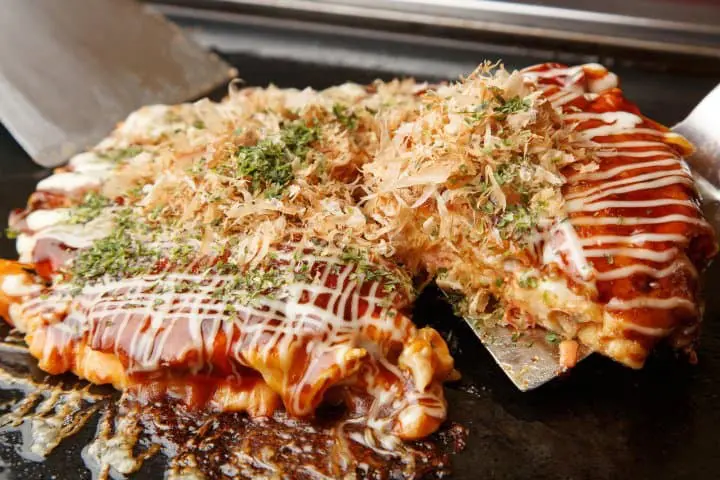
Okonomiyaki. Photo by Pixta
Okonomiyaki was originally a dish combining finely chopped cabbage, eggs, and dashi stock into a batter then topping it with meat before being grilled on an iron plate. Osaka and Hiroshima are both famous for this savory pancake, which is made differently in each prefecture.* The recipe we’ll be introducing is the Osaka-style okonomiyaki.
This dish started being made around after World War II ended. Food was scarce back then, so the first version was made by mixing flour with water that was then cooked before topped with sauce. It came to be called “okonomiyaki” (“okonomi” meaning "how you like," and “yaki” meaning cooked) because whoever was making the dish would add their favorite ingredients—like cabbage, pork, shrimp, and squid—to increase the volume of the dish.
*Okonomiyaki in Osaka is made with flour, and okonomiyaki in Hiroshima is made with noodles.
Read also
Ingredients for Okonomiyaki
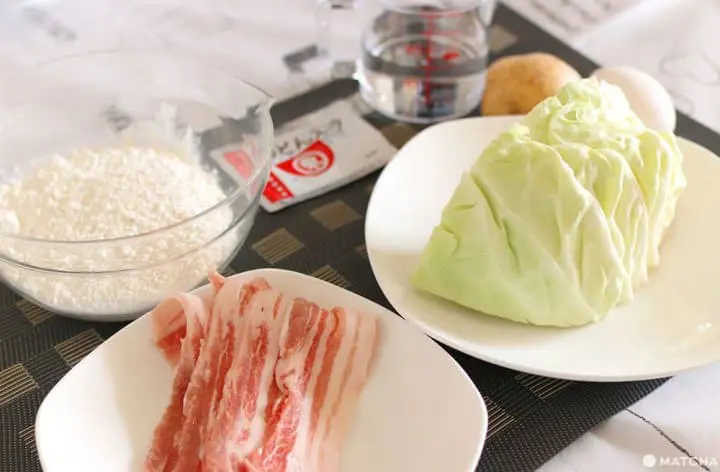
First, let’s prepare the ingredients.
Ingredients (4 servings)
・100g pork belly *Can be replaced with bacon
・200g (1/4 head) cabbage *Adjust the amount to your preferences
・1 egg
・150 – 200g flour (use self-rising flour that contains baking powder for a fluffy batter)
・1 small potato
・150ml water
・1 teaspoon of dashi stock powder or udon soup packet
・Adequate amount of oil (vegetable oil or whatever you prefer)
・Okonomiyaki sauce and mayonnaise to taste
Please refer to the tips at the end of this article when preparing your ingredients.
How to Prep for Okonomiyaki
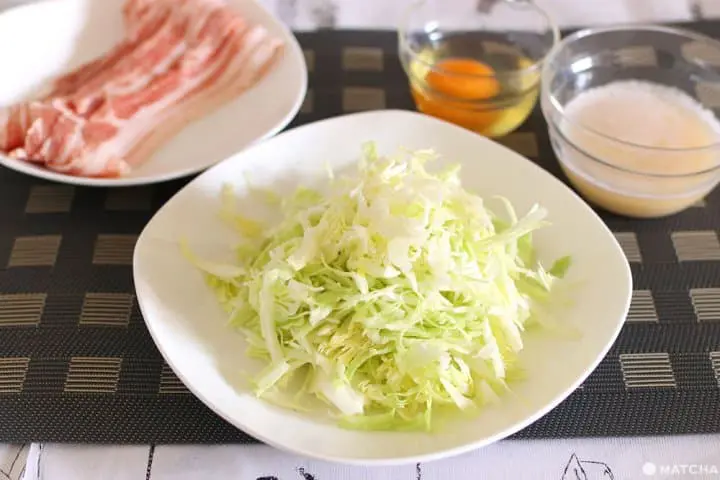
Make preparations by cutting the ingredients into bite-sized pieces and smaller sizes.
Steps for Ingredient Preparation:
・Cut the cabbage into fine strips.
・Thinly slice the pork belly into 3-millimeter thick strips. Substitute with bacon to skip this process.
・Peel the skin off the potato and cut it into small pieces.
・Combine chopped potato with 50ml of water in a blender and blend into a thick mixture.
The basic method of making this dish is to add the ingredients into the batter mixture of flour and water, then stir-fry. Thus, start by making the batter.
How to Make Okonomiyaki Batter
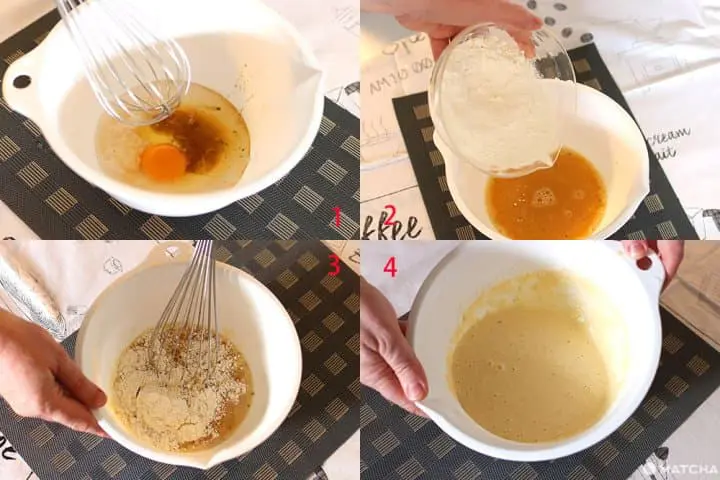
Quickly make the batter. Mix your ingredients following the steps below.
Steps for Making the Batter:
・Mix together 100ml of water, dashi stock powder (or an udon soup packet), the potato mixture, and an egg (picture 1).
・Mix while gradually adding flour until it becomes a similar consistency to pancake batter. Adjust the amount of flour accordingly (pictures 2, 3, and 4).
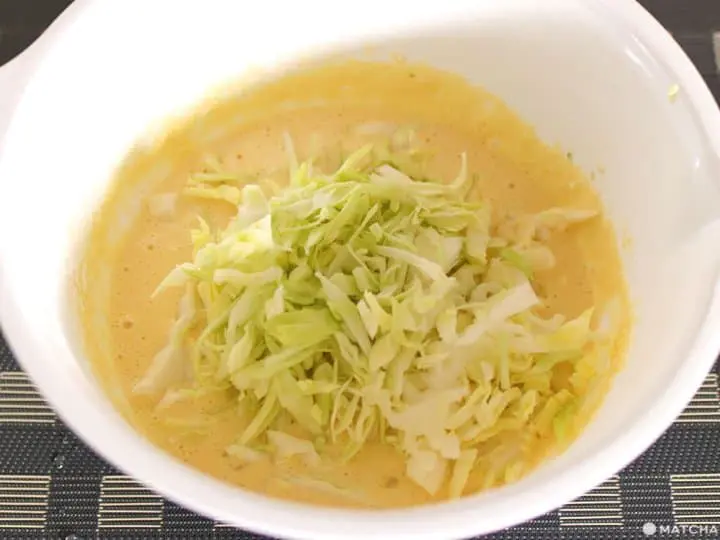
Add the cabbage once your batter is done and mix. All that’s left to do is to cook it. It’s very simple, isn’t it!
How to Cook
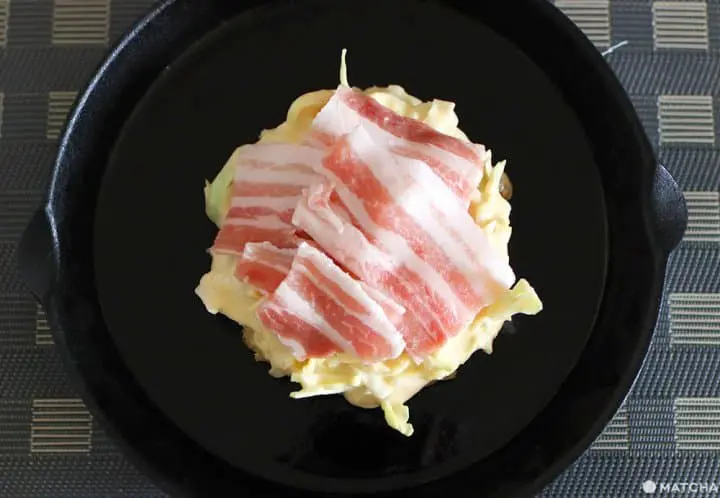
Well then, let’s get to cooking. Some families in Japan use a tabletop griddle, but you can also make delicious okonomiyaki in a frying pan!
Cooking Steps:
・Heat the frying pan and add oil.
・Pour the batter into the pan. It should roughly be about the size of a pancake (about 20cm in diameter).
・Lay the pork on top of the batter and leave it to cook.
・Flip the pancake once it becomes golden brown. Place a lid on the frying pan and continue to cook.
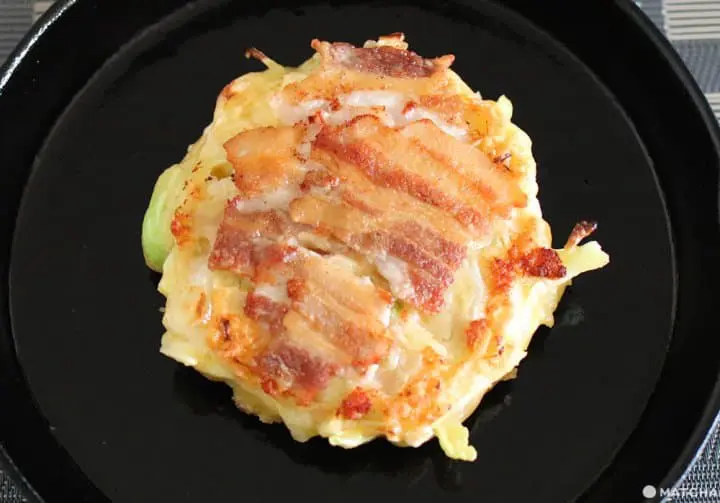
You’ll be done once the pork has become brown and crispy, and the batter is cooked through like pictured above.
Done! Top Your Okonomiyaki with Sauce and Mayonnaise
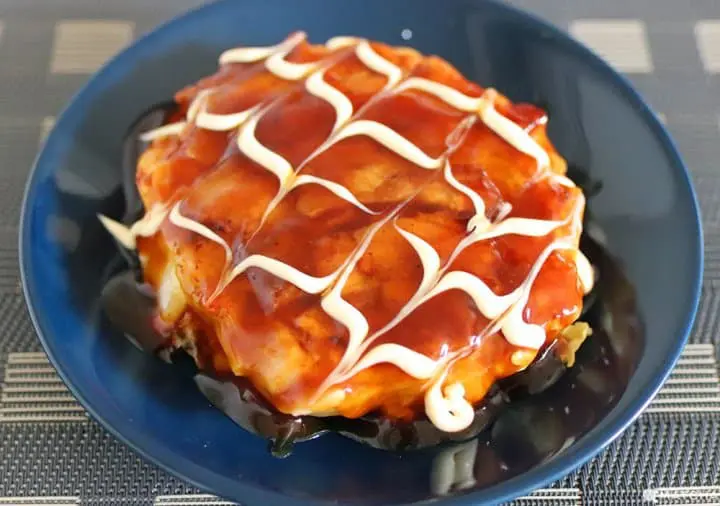
Add sauce and mayonnaise onto your cooked okonomiyaki, and let’s eat.
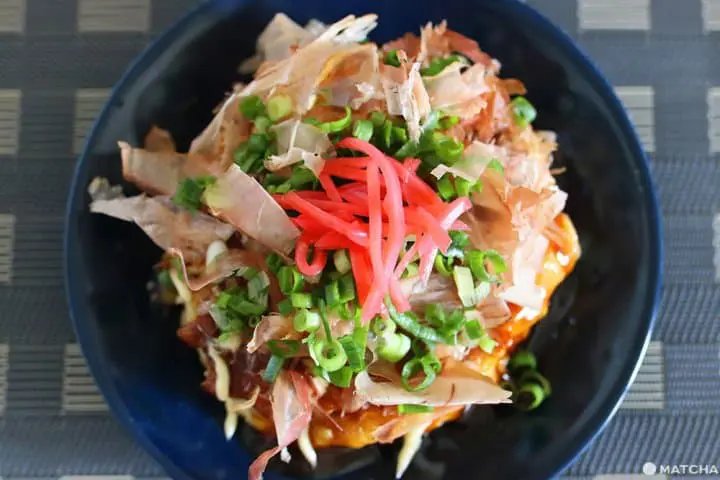
The dish is pictured garnished with katsuobushi, red pickled ginger, and green spring onions.
This dish is more than delicious with just sauce and mayonnaise, but we also recommend garnishing it with katsuobushi (dried bonito flakes), red pickled ginger, green spring onions, and nori seaweed. It’ll taste even more authentic with these toppings.
Tips for Making Okonomiyaki Outside of Japan
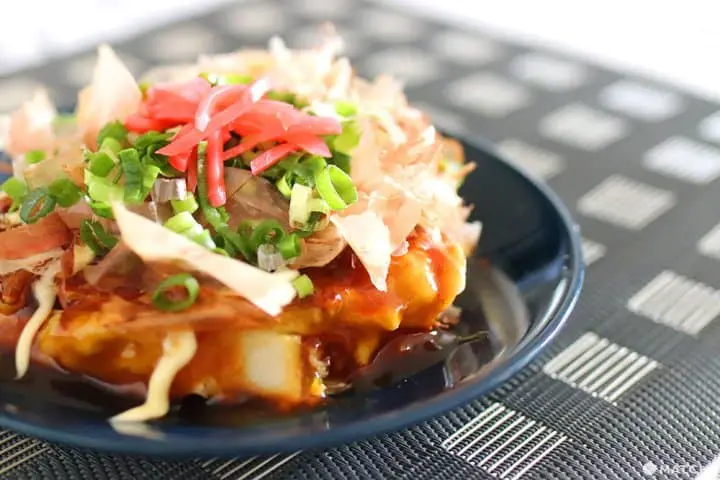
・It may be difficult to find thinly sliced pork and beef similar to what is sold in Japan in Western countries like Europe and the United States. It would be best to thinly slice the meat yourself for okonomiyaki, and other Japanese dishes, like gyudon (beef over rice) and sukiyaki (a hotpot-style dish).
・In Japan, nagaimo, or Chinese yam, is often grated and added to okonomiyaki to add a moist texture. This ingredient is rather challenging to find, so our writer used potatoes instead. The potatoes give the final product a springy texture.
・Dashi stock powder and udon soup are used as a substitute for katsuobushi to add depth to the flavor. These ingredients are sometimes found at shops like Daiso, a 100-yen shop (around 2.80 AUD in Australia, $1.50 – $1.99 in the United States).
・If you don’t have okonomiyaki sauce, you can make your own sauce by combining soy sauce, ketchup, barbeque sauce, and honey in equal amounts.
・Japanese mayonnaise, like the Kepiwe brand, has a mellow flavor that goes well with okonomiyaki.
・Dashi stock powder, okonomiyaki sauce, and Japanese mayonnaise can be purchased at Asian supermarkets worldwide, but is often sold at three times its price in Japan. If you can, buy these ingredients during your next Japan trip to enjoy cooking when you go back home.
Bring the Taste of Japan to Your Kitchen!
Making okonomiyaki is simple. It’s so simple that even those making Japanese food for the first time can make it. Now that you’ve experienced the taste of Japan in your own kitchen, what’s next? To enjoy the authentic dish in Osaka, of course!










































![[Coupon Available] Attention Overseas Winter Sports Fans! Nagano's Sports Depot Has Evolved](https://resources.matcha-jp.com/resize/720x2000/2026/01/05-254819.webp)